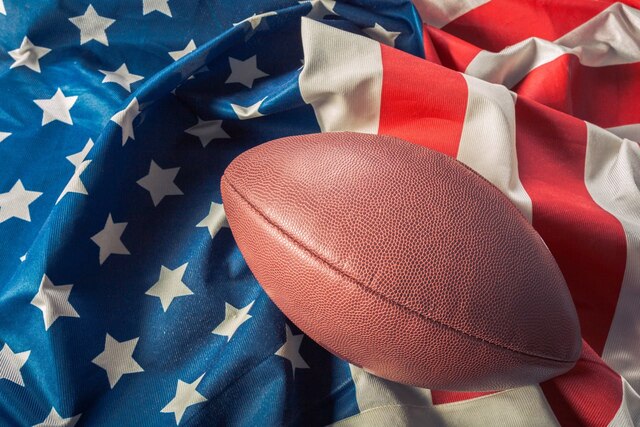American Football: From Historic Beginnings to Modern Challenges
American football, one of the major sports in the United States, has evolved from humble beginnings into the powerful force known as the National Football League (NFL). The game, known for its strategic depth and physical intensity, has undergone significant changes since its inception. The sport has also established itself as one of the most injury-prone sports on the world stage. On the one hand, this adds passion and excitement to every game. But on the other hand, athletes should be as careful as possible and prepare for injuries in advance, so as not to fall out of a competitive tournament due to an unexpected injury.
Let’s learn more about the history of the sport, the key figures who influenced its development, and the serious problems it faces today, in particular the high injury rate.
The Genesis and Growth of American Football
The roots of American football go back to the late 19th century, borrowing elements from football and rugby. The first intercollegiate football game was played on November 6, 1869, between Princeton University and Rutgers University. What began as a kick-oriented game gradually evolved into a sport that emphasizes physical contact and strategic ball handling.
The formation of the NFL in 1920 was a turning point in the development of professional football. It was originally called the American Professional Football Association, consisted of ten teams, and was renamed the NFL two years later, marking the beginning of what has become the premier professional football league in the world.
By mid-century, the NFL started to gain substantial national attention, helped in part by the rise of television. Televised games introduced the sport to a broader audience and allowed it to compete with Major League Baseball as America’s favorite pastime.
Throughout the 1960s and beyond, the NFL continued to grow, both in terms of popularity and economic impact. The merger with the American Football League (AFL) in 1970 expanded the league’s reach and led to the creation of the Super Bowl, a cultural phenomenon that annually draws millions of viewers worldwide.
At the moment, the NFL league is the leader in the United States and the world in the organization of American football matches, which gather millions of fans in front of screens and in stadiums.

Prominent Figures in NFL History
The NFL has given the world many outstanding athletes who have exemplified courage and resilience. Their stories of athletic success inspire athletes around the world to achieve new things every day.
Several individuals have left indelible marks on the NFL, shaping the game and its culture:
- Vince Lombardi
Known for his leadership with the Green Bay Packers, Lombardi’s name now graces the Super Bowl trophy, awarded annually to the league champions. - Jim Brown
Considered one of the greatest running backs in NFL history, Brown’s dominant career with the Cleveland Browns has become a benchmark for excellence. - Joe Montana
A symbol of cool under pressure, Montana led the San Francisco 49ers to four Super Bowl victories, earning a reputation as one of the best quarterbacks in history.
These figures, among others, have not only contributed to the sport’s tactical development but have also become cultural icons, embodying the spirit and competitive essence of American football.
The Modern NFL and Its Global Influence
 Today, the NFL stands as a behemoth in the sports industry, with teams like the Dallas Cowboys, New England Patriots, and Pittsburgh Steelers enjoying worldwide recognition. The league’s ability to market and broadcast games across the globe has brought American football to an international audience, expanding its reach and influence.
Today, the NFL stands as a behemoth in the sports industry, with teams like the Dallas Cowboys, New England Patriots, and Pittsburgh Steelers enjoying worldwide recognition. The league’s ability to market and broadcast games across the globe has brought American football to an international audience, expanding its reach and influence.
Major events like the Super Bowl attract viewership in the hundreds of millions, featuring a mix of high-stakes competition and high-profile entertainment. The NFL Draft, once a low-key affair, has become a significant event in its own right, highlighting the league’s ability to engage fans year-round.
Injury and Player Safety
While the NFL has celebrated numerous successes, it also faces significant challenges, primarily related to player injuries:
- Physical Trauma: American football is known for its physicality, which, while central to the sport’s appeal, also leads to injuries. Players often suffer from concussions, torn ligaments, and broken bones.
- Concussions: Perhaps the most alarming concern is the rate of concussions and their long-term effects on player health, including chronic traumatic encephalopathy (CTE).
- Preventive Measures: In response, the NFL has implemented rule changes, improved helmet designs, and better sideline medical protocols. The league has also invested in research to better understand and mitigate the risks associated with the sport.
Analyzing and Preventing Injuries
The importance of analyzing injuries lies in developing strategies to prevent them, thereby safeguarding players’ health and careers. This involves:
- Enhanced Equipment: Ongoing innovations in gear, especially helmets, aim to absorb impacts more effectively.
- Rule Changes: Adjustments to game rules, such as those limiting head-first contact and tackling styles, help reduce dangerous plays.
- Training and Conditioning: Teams are increasingly focusing on conditioning regimes that enhance player durability and reduce injury risks.
The Future of the NFL
As the NFL moves forward, balancing the physical nature of the sport with the health of its players remains a paramount concern. The league’s proactive stance on safety, combined with its efforts to maintain the game’s integrity and appeal, will be crucial in shaping the future of American football.
American football, particularly the NFL, stands at a crossroads between tradition and modernity, where the thrill of the game must be aligned with the well-being of those who play it. As it continues to captivate fans worldwide, the NFL’s legacy will undoubtedly be influenced by how it addresses these challenges, ensuring the sport remains both vibrant and viable for future generations.
